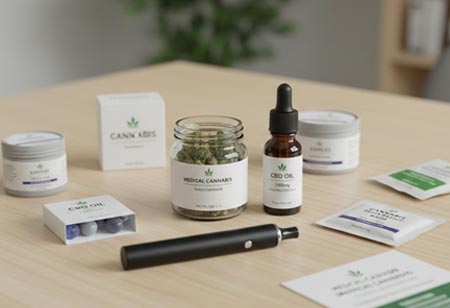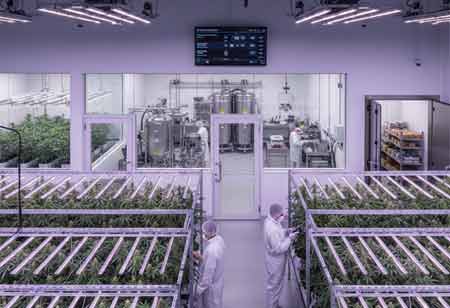Thank you for Subscribing to Cannabis Business Insights Weekly Brief
Applications of Cannabis Extracts in Industry
The cannabis extraction process is diverse, utilizing solvent-based or solventless techniques for high-potency concentrates and natural extracts, offering a wide range of cannabis products to cater to diverse tastes.

By
Cannabis Business Insights | Tuesday, March 25, 2025
Stay ahead of the industry with exclusive feature stories on the top companies, expert insights and the latest news delivered straight to your inbox. Subscribe today.
Fremont, CA: The process of cannabis extraction is essential in creating cannabis products, as it enables the separation of basic compounds like cannabinoids and terpenes. The compounds are utilized in a range of products, including oils, edibles, and topical applications. Knowing the various methods of cannabis extraction can empower consumers and producers to make knowledgeable choices regarding the products they use or develop.
Solvent-Based Extraction
Solvent-based extraction methods use chemical solvents to dissolve the desired compounds from the cannabis plant. The most common solvents include butane, propane, ethanol, and CO2. Every solvent possesses its own set of advantages and disadvantages, which depend on the intended final product.
Butane and Propane Extraction: These methods are popular for producing high-potency concentrates like shatter and wax. The cannabinoids and terpenes are dissolved in butane or propane and extracted from the solvent by evaporation. This method is efficient but requires careful handling due to the solvents' flammability.
Ethanol Extraction: Ethanol is a versatile solvent that can produce various cannabis extracts. It is particularly effective for creating full-spectrum extracts that retain a broad profile of cannabinoids and terpenes. Ethanol extraction is considered safer than butane or propane extraction, as ethanol is less flammable.
CO2 Extraction: CO2 extraction uses supercritical carbon dioxide to extract cannabinoids and terpenes. This highly efficient method produces clean, high-quality extracts without residual solvents. The industry extensively uses CO2 extraction since it is safe and may yield a wide range of goods, including edibles and oils.
Solventless Extraction
For individuals looking for a more natural extraction process, solventless extraction techniques are favored because they don't require chemical solvents. These methods rely on physical techniques to separate the desired compounds from the plant material.
Rosin Press: The rosin press method extracts terpenes and cannabinoids from cannabis flowers or hash by applying pressure and heat. This technique is simple and can be done at home with minimal equipment. The resulting product, known as rosin, is a pure and potent concentrate.
Ice Water Hash: It's also called bubble hash; this is an agitation technique in which trichomes, carrying cannabinoids and terpenes, are separated from the plant material through ice water agitation. They are collected and dried to produce high-quality concentrates, and so far, their purity and potency are being valued for that.
Dry Sifting: In dry sifting, the trichomes are separated from the cannabis plant material using fine screens. This method is straightforward and does not require any solvents or heat. The resulting product, kief, can be used independently or further processed into hash.
Hybrid Methods
Some extraction methods combine elements of both solvent-based and solventless techniques to achieve specific results. These hybrid methods can offer the benefits of both approaches, such as enhanced purity and potency.
Hydrocarbon and CO2 Hybrid Extraction: This method combines hydrocarbon solvents (like butane or propane) and CO2 to extract cannabinoids and terpenes. The process starts with hydrocarbon extraction to capture a broad spectrum of compounds, followed by CO2 extraction to refine the product and remove residual solvents.






